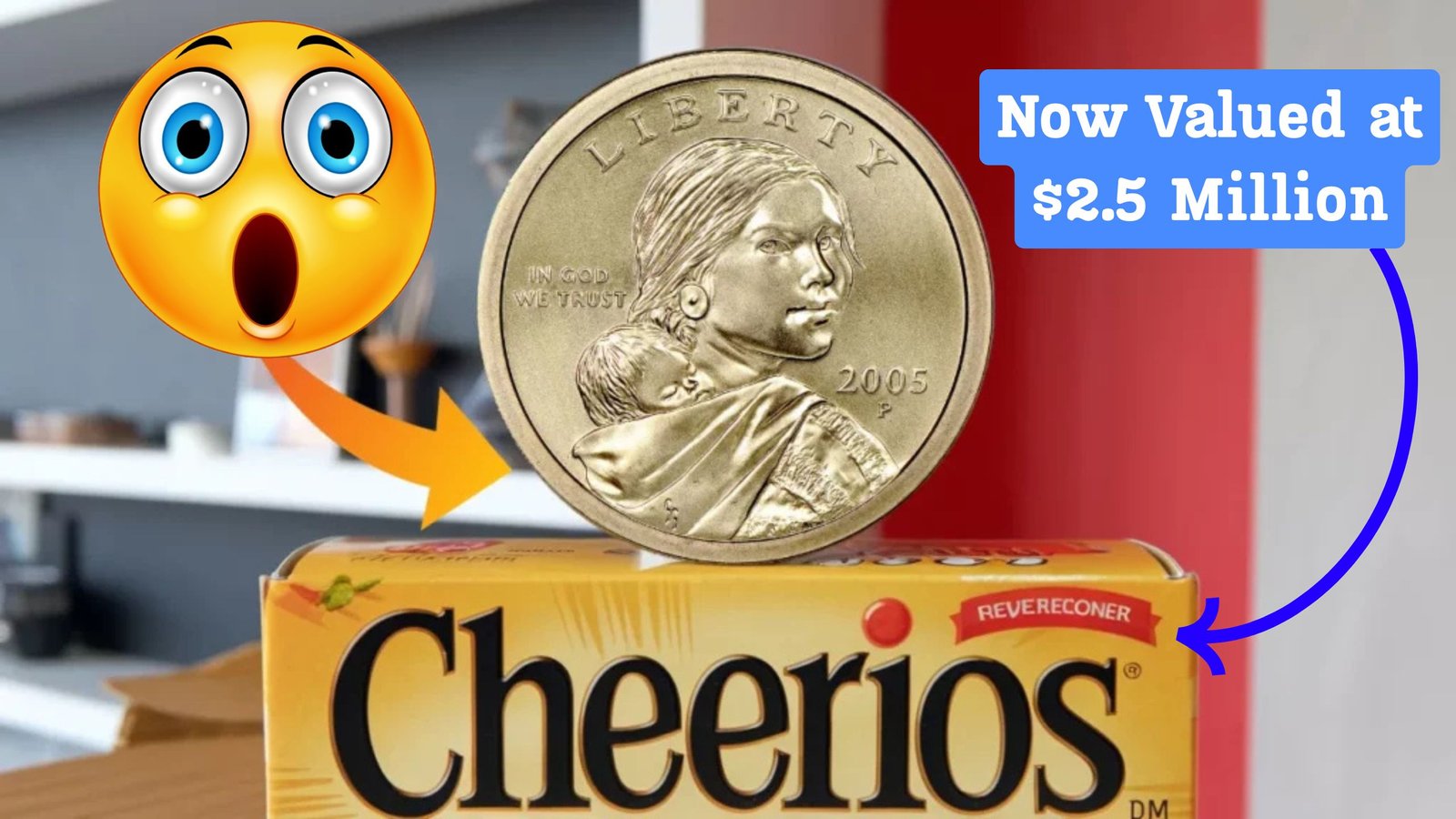The Sacagawea Dollar, introduced in 2000, holds a unique place in American coinage. While most examples are common and worth only a dollar, a special variety known as the “Cheerios Dollar” has become a legendary rarity. Recently, one of these coins surfaced in everyday change, and experts now estimate its value at an incredible $2.5 million. This discovery highlights how hidden treasures can still be found where people least expect them.
The Story Behind the Cheerios Dollar
This heading refers to the unusual origin of the coin. In 2000, the U.S. Mint partnered with General Mills to promote the brand-new Sacagawea Dollar by placing 5,500 of them inside Cheerios cereal boxes. These coins looked just like the new “golden dollars” that were entering circulation, but their distribution method made them stand out. Collectors later learned that this promotion created one of the rarest modern U.S. coins.
What Makes the Reverse So Special
This heading explains the coin’s design difference. On the reverse side of the Cheerios Dollar, the eagle’s tail feathers include extra detail not found on the mass-produced circulation version. These finely engraved lines were part of the original master design but were later simplified for general production. That small but noticeable difference makes the Cheerios Dollar unique, and collectors immediately recognized it as a true rarity once it was discovered.
From a Cereal Box to a $2.5 Million Value
This section shows the dramatic journey of the Cheerios Dollar’s worth. When first distributed in cereal boxes, these coins were worth only face value — one dollar. Over time, as collectors realized the design difference and the limited number produced, demand grew quickly. Today, their scarcity and story have pushed values as high as $2.5 million, transforming what was once a breakfast promotion into one of the most sought-after coins in U.S. history.
How One Ended Up in Circulation
This heading highlights the mystery of discovery. Most Cheerios Dollars are believed to be in private collections or secured by dealers. Yet recently, one appeared in everyday circulation, sparking amazement among collectors. The coin may have been unknowingly spent, inherited, or overlooked in a jar of spare change. Its appearance shows that even extraordinary coins can slip through the cracks and find their way back into ordinary use.
Why the Cheerios Dollar Captivates Collectors
This section explains the broader appeal of this coin. Collectors are fascinated not only by its rarity but also by its unusual origin. The fact that a coin worth millions today once came as a free prize in a cereal box adds a layer of charm to its story. Its sharp design, limited mintage, and cultural connection make it a modern icon in numismatics. For many, it represents the dream of finding a fortune in the most ordinary places.
Frequently Asked Questions (Sacagawea Dollar With Cheerios Reverse Found in Change )
Q1: How many Cheerios Dollars exist?
Only 5,500 were distributed in cereal boxes, but not all have been confirmed to carry the special reverse design. This makes the surviving examples even scarcer.
Q2: How can I tell if my Sacagawea Dollar is a Cheerios Dollar?
Look closely at the eagle’s tail feathers on the reverse. If you see extra lines and detail compared to a regular Sacagawea Dollar, it could be the Cheerios variety. Professional grading services can confirm authenticity.
Q3: Why is it worth $2.5 million?
The value comes from extreme rarity, collector demand, and the coin’s unique backstory. Since so few exist with the special design, they command extraordinary prices at auction.
Q4: Are all Sacagawea Dollars valuable?
No. Most Sacagawea Dollars are worth only face value. Only rare varieties like the Cheerios Dollar or special errors hold significant value.
Q5: Could I still find one in my change?
It’s unlikely, but as the recent discovery proves, it is not impossible. Some Cheerios Dollars may still be hidden in coin jars, collections, or even in circulation.




